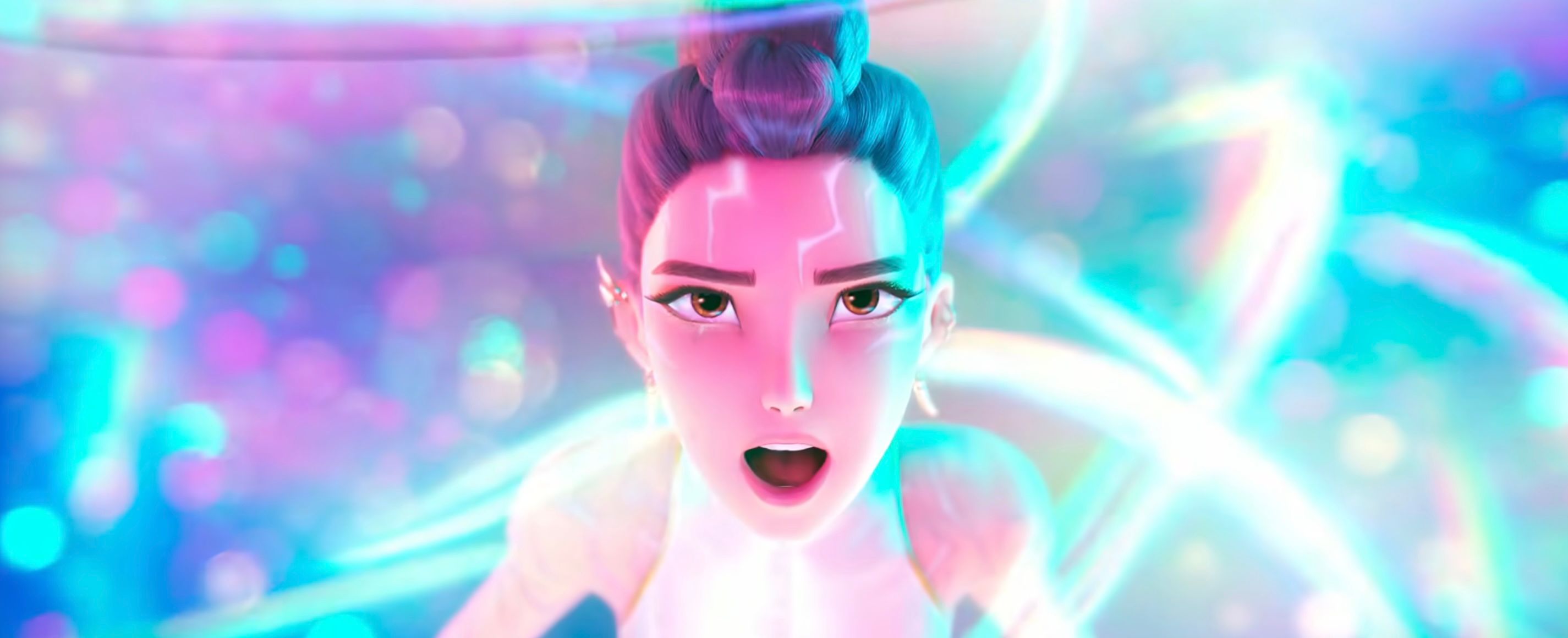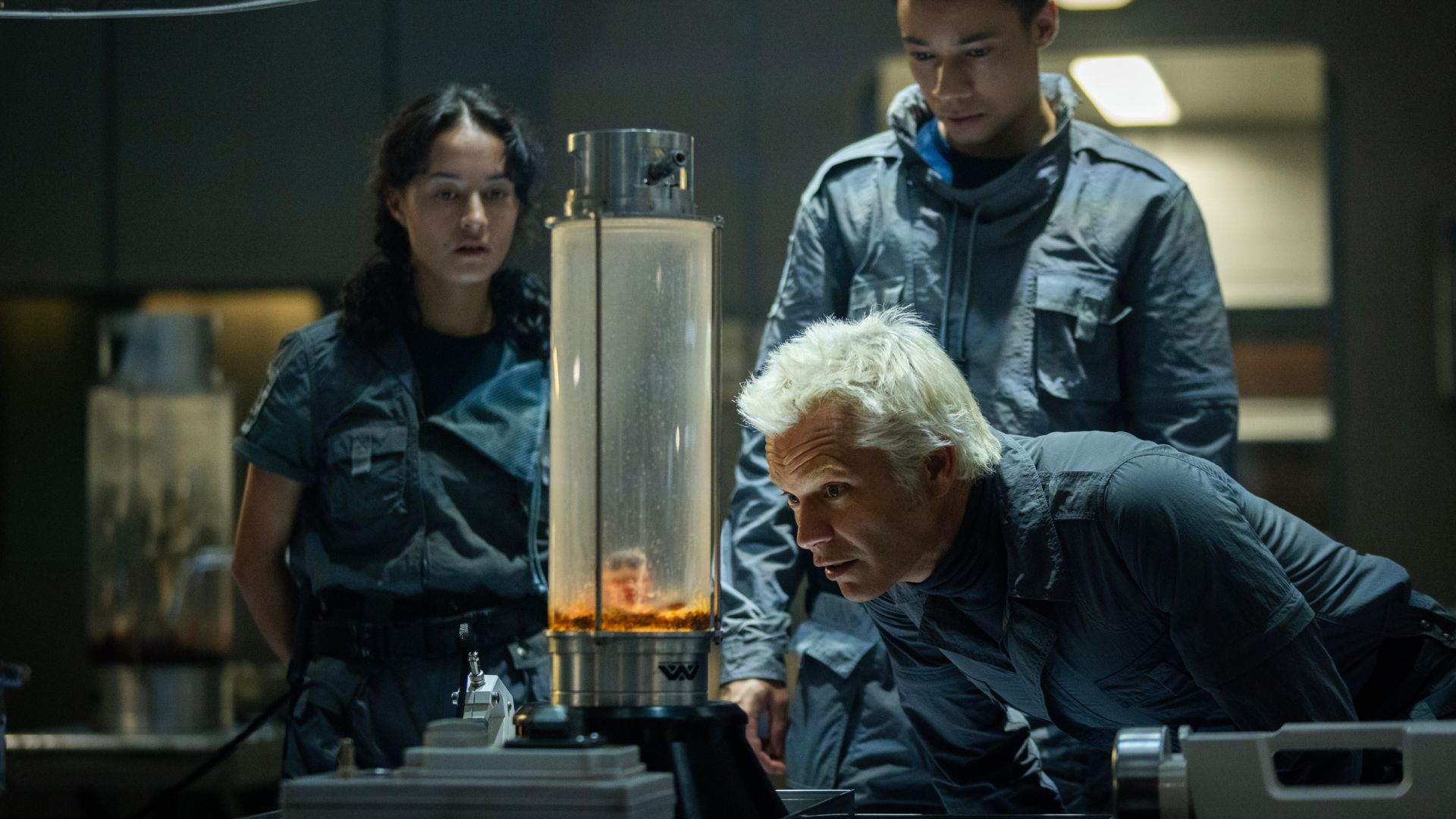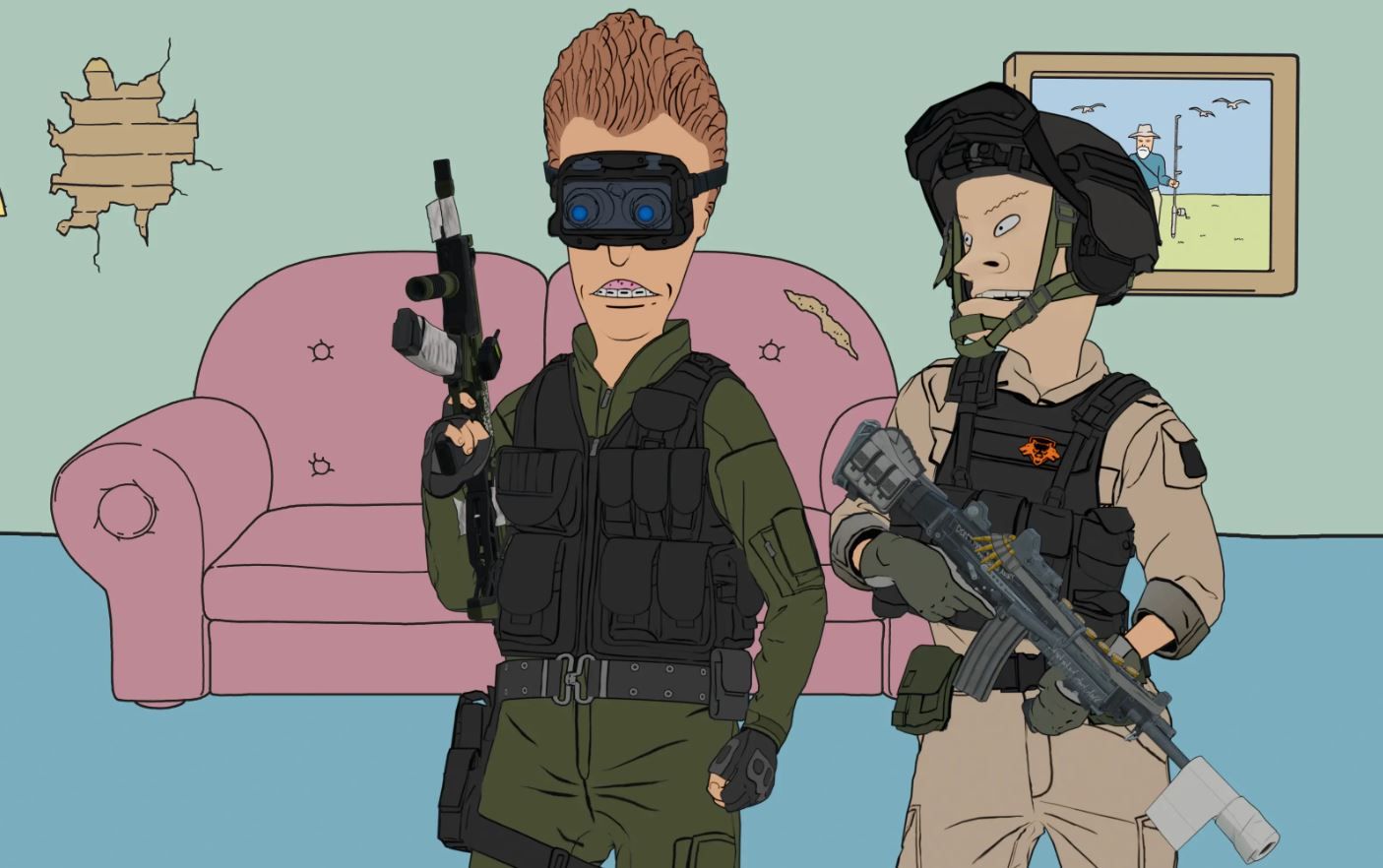The Xenomorph is the star of the show in Alien: Earth, but after catching episode 4, “Observation,” I’m starting to think the eyeball-octopus monster might be a bigger threat than anyone realizes.
When we first encountered the creepy little creature — officially known as trypanohyncha ocellus, or Species 64 — it was innocently floating in its containment unit on the USCSS Maginot in episode 1. By the time Kirsh (Timothy Olyphant) and his group of adolescent android assistants, The Lost Boys, stumbled across it, it had escaped containment and burrowed its way into the skull of a dead cat, replacing the poor thing’s eyeball and hijacking its nervous system. In “Observation,” it did the same thing to a sheep in one of Prodigy’s labs, and had a pretty unsettling stare-down with everyone’s least-favorite eternally barefoot trillionaire, Boy Kavalier (Samuel Blenkin).
The foreshadowing seems clear: That thing’s gonna end up crawling into the Prodigy CEO’s skull at some point in the probably not-too-distant future. But as of episode 4, the humans aren’t who I’m worried about.
[Ed. note: Spoilers ahead for Alien: Earth episode 4.]
From what we’ve seen thus far, it’s pretty clear that facehuggers, chestbursters, Xenomorphs, those weird blood-sucking ticks, and that odd, plant-like thing Kirsh found hanging out in the Maginot’s wreckage are, for the most part, only interested in creatures made of flesh and blood. Even in episode 3’s big Xenomorph vs. Wendy (Sydney Chandler) fight, the alien mostly seemed interested in her human brother — Wendy was just getting in its way.
By the end of episode 3, Kirsh had caught onto this, and wisely declared the lab currently housing the Xenomorph eggs as a synths-only zone, removing Boy Kavalier from the room for his own safety. In “Observation,” Kirsch gently caresses one of those eggs, and it doesn’t respond. By the end of the episode, Wendy is casually snake-charming a chestburster, petting it like a house cat. The message is clear: Synthetics are relatively safe, humans are not.
But this doesn’t necessarily apply to t. ocellus. When The Lost Boys first encountered it on the Maginot, it immediately abandoned its feline host and went straight for nervous redhead Nibs (Lily Newmark), who managed to escape the encounter physically unscathed, but has been having flashbacks ever since, and is now inexplicably convinced that she is pregnant. But Nibs is synthetic, and she wasn’t doing anything to provoke the creature, which had already found a host. So why on Earth did it go after her?
“Observation” seems to suggest that unlike the other creatures from the alien homeworld, t. ocellus is something unique. My theory? It doesn’t feed on flesh and blood. It feeds on intelligence. Which means none of Prodigy’s synthetics or hybrids are truly safe. If anything, they’re in more danger than their non-synthetic counterparts, as they can download massive amounts of information into their brains, allowing them to learn new languages and master difficult scientific subjects with ease.
So for instance, Tootles (Kit Young), who recently re-christened himself Isaac, after Sir Isaac Newton, is likely in a good amount of danger given his ever-growing mental library of scientific knowledge, and the fact that he works with Kirsh in close proximity to Prodigy’s various extraterrestrial test subjects.
If you’re wondering how feeding on intelligence would even work, well, so am I. But notes taken by the Maginot scientists who were studying the creature before their ship crashed make it clear that this creature is not to be trifled with. According to the Maginot’s science team, t. ocellus displays “remarkable problem-solving skills at near-human measure,” so it’s certainly possible it could learn to feed from a synthetic host, and its immediate desire to climb into Nibs’ skull seems to suggest it’s perfectly capable of doing exactly that.
T. ocellus‘ existence may also explain something about Xenomorphs themselves. In the original 1979 movie Alien, the Xenomorph is depicted as having small, seemingly empty eye sockets. In subsequent films, Xenomorphs appear to have no eye sockets whatsoever, even though they are shown to have some form of sight. Since Xenomorphs and t. ocellus share a home planet, perhaps Xenomorphs evolved this way on purpose. They’re known to be very intelligent creatures, which would ostensibly make them an ideal host for t. ocellus. But if they’re able to co-exist peacefully with the eyeball-invalding alien, it may be because they don’t have eyeballs that are easily scooped out, and they bleed caustic acid — two defense mechanisms that probably make trying to hijack them difficult or even impossible for t. ocellus.
Regardless, one thing is pretty clear: Wendy’s synthetic body and weird, Parseltongue-esque ability to replicate Xenomorph speech may keep her safe from the Alien franchise’s big bad, but she and the rest of The Lost Boys are probably t. ocellus‘ ideal prey.
As satisfying (and scary) as it would be to see Species 64 scoop out one of Boy Kavalier’s eyeballs and puppeteer his body, the thought of it hijacking the brain of a highly intelligent, extremely strong, nigh-indestructible hybrid who can move at the speed of light is what’s really keeping me up at night.
The eight-episode debut season of Alien: Earth premiered on FX and Hulu on Aug 12. Further episodes roll out on Tuesdays through Sept. 9.















![27th Aug: Christopher – A Beautiful Real Life (2025), 1hr 31m [TV-MA] (6/10)](https://occ-0-8164-92.1.nflxso.net/dnm/api/v6/Qs00mKCpRvrkl3HZAN5KwEL1kpE/AAAABaL7Tu2WuOnCwvPFQe3eHDJ2XqkBP3dAfZWaDapXNChrwvoX_jd3dBVxQCQQko0XREXJi4rODehcrAmT96DYm6pQf-qC99_EV_bs_ZoE5KPxB0NuSGUkmgYquABzZ7aexgTPM0pxSJM_G4T__rXyxrRFh9WwUs04AqHxMvlzfpqve4MrHbBr2LB7wTk_fnMelOWyn-4jnw.jpg?r=e40)